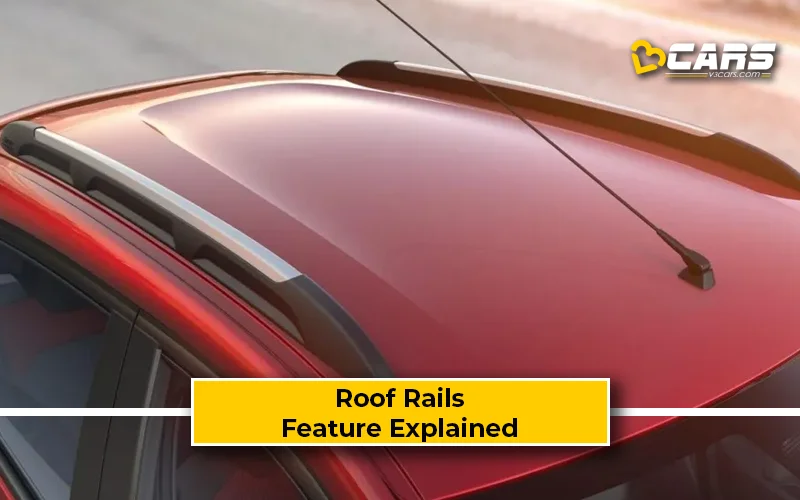Roof Rails – Feature Explained
Roof rails are a common feature on many modern vehicles, particularly SUVs and crossovers, offering increased versatility and functionality. Let’s explore what they are, how they work, and their pros and cons.

What Are Roof Rails?
Roof rails are longitudinal bars that run along the length of a vehicle’s roof. They are designed to provide a secure attachment point for mounting various accessories, significantly increasing the vehicle’s cargo-carrying capacity.
How Do Roof Rails Work?
Roof rails serve as a base structure for attaching crossbars or other rack systems. These, in turn, can be used to carry a variety of items, including:
- Roof boxes: Enclosed containers for luggage, gear, or other cargo.
- Bike racks: To transport bicycles.
- Kayak/canoe carriers: To carry water sports equipment.
- Ski/snowboard racks: For winter sports enthusiasts.
The roof rails provide a stable and secure platform, ensuring that the load is safely transported.
Note: Not all roof rails are functional in nature. For example, the roof rails on the 2025 Creta cannot support any weight whereas the roof rails on a Ford EcoSport can accommodate a cross bar and carry a load of up to 50kg. Hence, it is important to check your car’s owner’s manual before attempting to carry any cargo on the roof.
What Are The Differences Between A Flush Roof Rail And Raised Roof Rails?
Roof rails come in 2 main types:
- Flush Roof Rails: These are mounted close to the vehicle’s roof, offering a sleek, low-profile appearance. They are often more aerodynamic, which can help reduce wind noise and drag. However, they may require specific attachments for certain accessories.
- Raised Roof Rails: These rails are positioned higher above the roof, with a gap between the rail and the roof. This design offers more versatility and makes it easier to attach various types of roof racks and accessories.
What Are The Pros And Cons Of Roof Rails?
Here are the pros, or advantages, of roof rails:
- Increased cargo capacity: Roof rails significantly expand a vehicle’s cargo capacity, allowing for the transportation of large or bulky items that won’t fit inside the boot or the cabin.
- Versatility: They provide a platform for a wide range of accessories, catering to various activities and needs.
- Enhanced practicality: Roof rails make it easier to transport sports equipment, luggage, and other gear, making them ideal for road trips, outdoor adventures, and family vacations.
- Aesthetic appeal: Many people find that roof rails add a rugged and adventurous look to a vehicle.
Here are the cons, or disadvantages, of roof rails:
- Reduced fuel efficiency: Adding weight and increasing the vehicle’s profile can slightly decrease fuel economy due to added wind resistance.
- Wind noise: Roof rails, especially when combined with crossbars or other accessories, can generate wind noise, particularly at higher speeds.
- Height restrictions: The added height of roof rails and cargo can limit clearance in garages, tunnels, and other overhead obstacles.
- Cost: Installing roof rails and compatible accessories can be an additional expense.
Can Roof Rails Be Fixed From The Aftermarket?
Yes, roof rails can be installed or added to many vehicles in the aftermarket. A wide variety of roof rail systems are available, offering different styles, materials, and weight capacities. Aftermarket options allow vehicle owners to customize their vehicles to suit their specific needs and preferences.
Also Read: Top EVs In India With Over 500km Range
Helpful Tools:
- Fuel Cost Calculator for Cars – Know your monthly fuel expense based on usage and mileage
- Car On-Road Price Calculator – Convert ex-showroom to on-road price for any city
Sell Used Car Online – Enter your car and contact details to get an instant price estimate and book a free inspection with our partner network


0 Comments